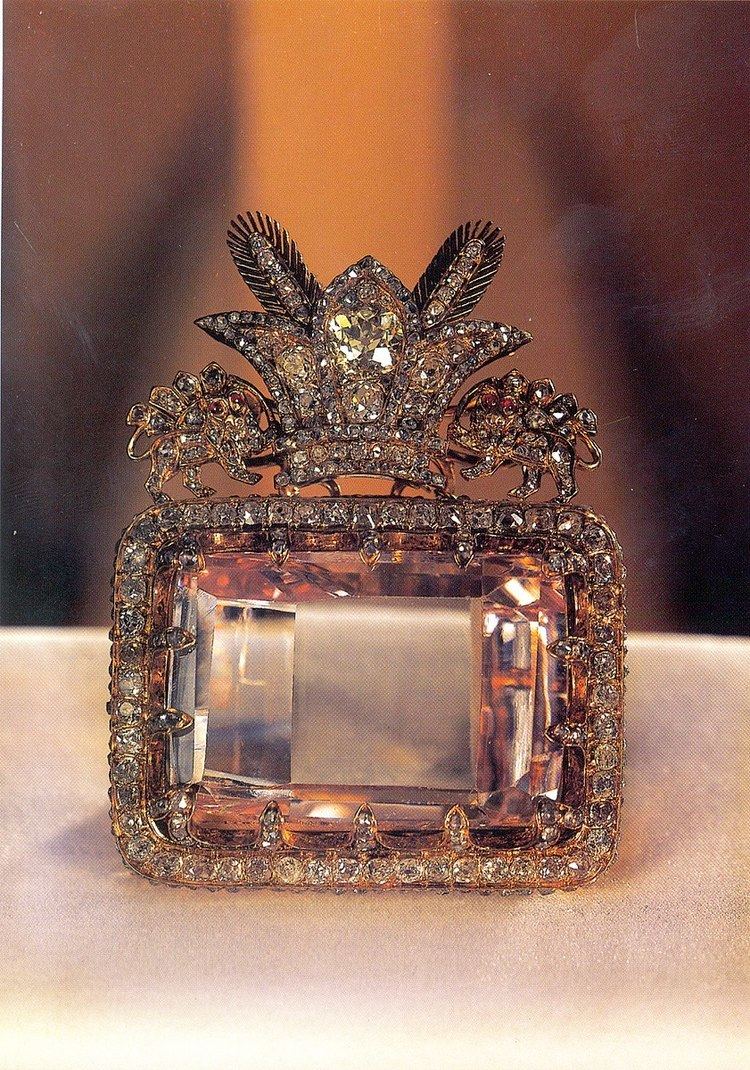Weight 182 carats (36.4 g) | Color Pale pink Cut by Shekhar Bhimanadham | |
 | ||
Cut Tabular, free-form. Inscribed. Mine of origin | ||
The Daria-i-Noor (Persian: دریای نور which means “Sea of light” in Persian; (also spelled Darya-ye Noor) is one of the largest cut diamonds in the world, weighing an estimated 182 carats (36 g). Its colour, pale pink, is one of the rarest to be found in diamonds. The Daria-i-Noor is in the Iranian Crown Jewels of Central Bank of Iran in Tehran.
Contents
History
This diamond, like the Koh-i-Noor, was mined at the Paritala-Kollur Mine in Andhra Pradesh, India. It was originally owned by the Kakatiya dynasty, later it was looted by Turkic Khilji dynasty and to Mughal emperors.
In 1739, Nader Shah of Iran invaded Northern India, occupied Delhi. As payment for returning the crown of India to the Mughal emperor, Muhammad, he took possession of the entire fabled treasury of the Mughals, including the Daria-i-noor, in addition to the Koh-i-noor and the Peacock throne.
Daria-i-noor, along with the Koh-i-noor, was later acquired by Ranjit Singh of Sikh Empire. It finally came into the possession of East India Company when Punjab fell under the British Rule in 1849. Daria-i-noor was one of the main attractions of The Great Exhibition in 1851. In 1852, Hamilton and Company auctioned the diamond under the direction of the British government. At the auction, the diamond was purchased by Khwaja Alimullah from Dhaka Nawab Family. In his visit to Calcutta in 1887, Viceroy of India Lord Dufferin went to see the diamond at Baliganj.
Daria-i-noor was also seen by King George V and Queen Mary during their visit to Calcutta in 1912. After the Partition of India in 1947, the diamond was transferred from Calcutta to Dhaka and since then, has been kept in a vault of Sonali Bank. In 1985, a group of experts approved the genuineness of the diamond through an examination.
Possible association
In 1965, a Canadian team conducting research on the Iranian Crown Jewels concluded that the Daria-i-Noor may well have been part of a large pink diamond that had been studded in the throne of the Mughal emperor Shah Jahan, and had been described in the journal of the French jeweller Jean-Baptiste Tavernier in 1642, who called it the Great Table diamond ("Diamanta Grande Table"). This diamond may have been cut into two pieces; the larger part is the Daria-i-Noor; the smaller part is believed to be the 60-carat (12 g) Noor-ul-Ain diamond, presently studded in a tiara also in the Iranian Imperial collection.
